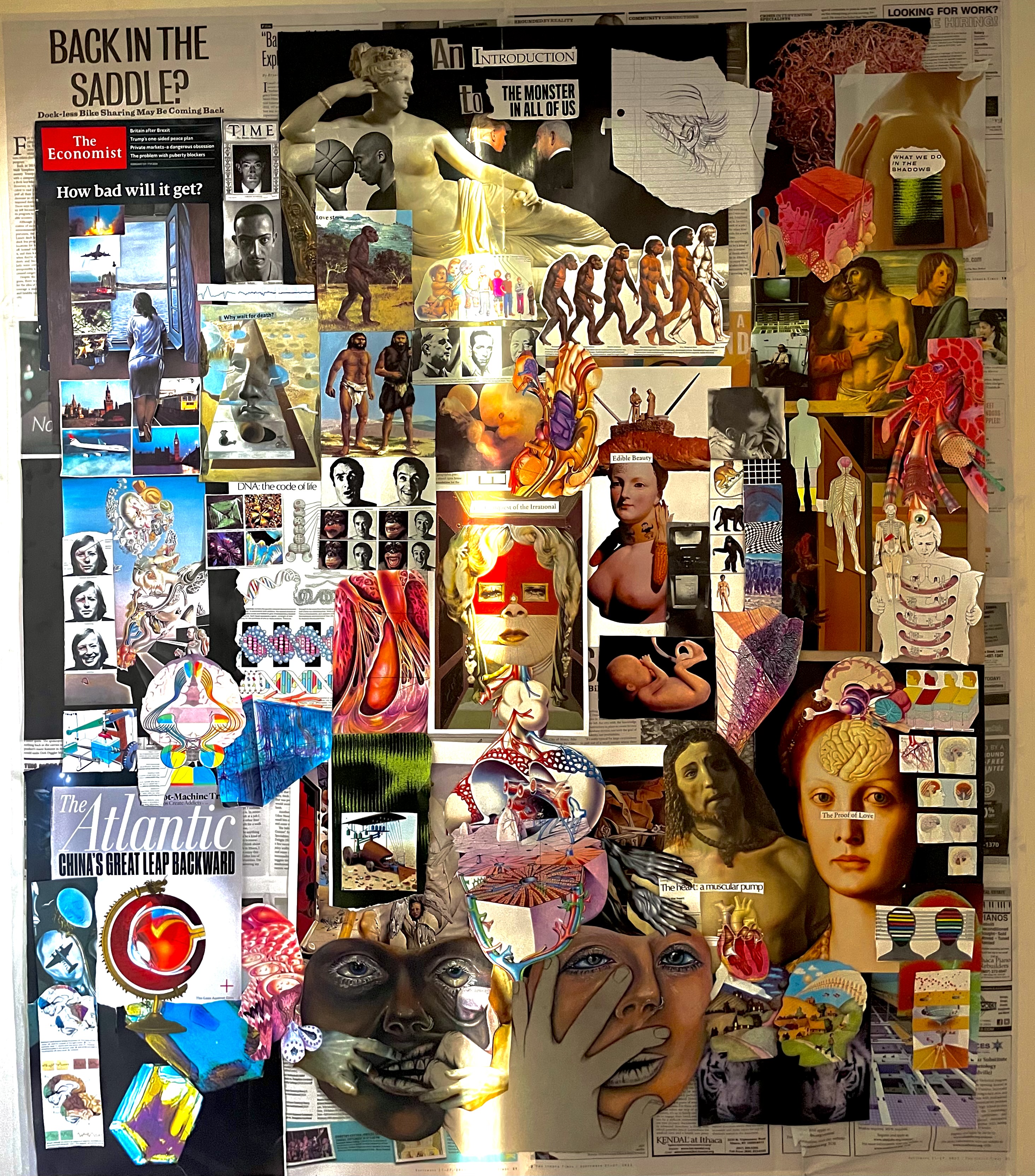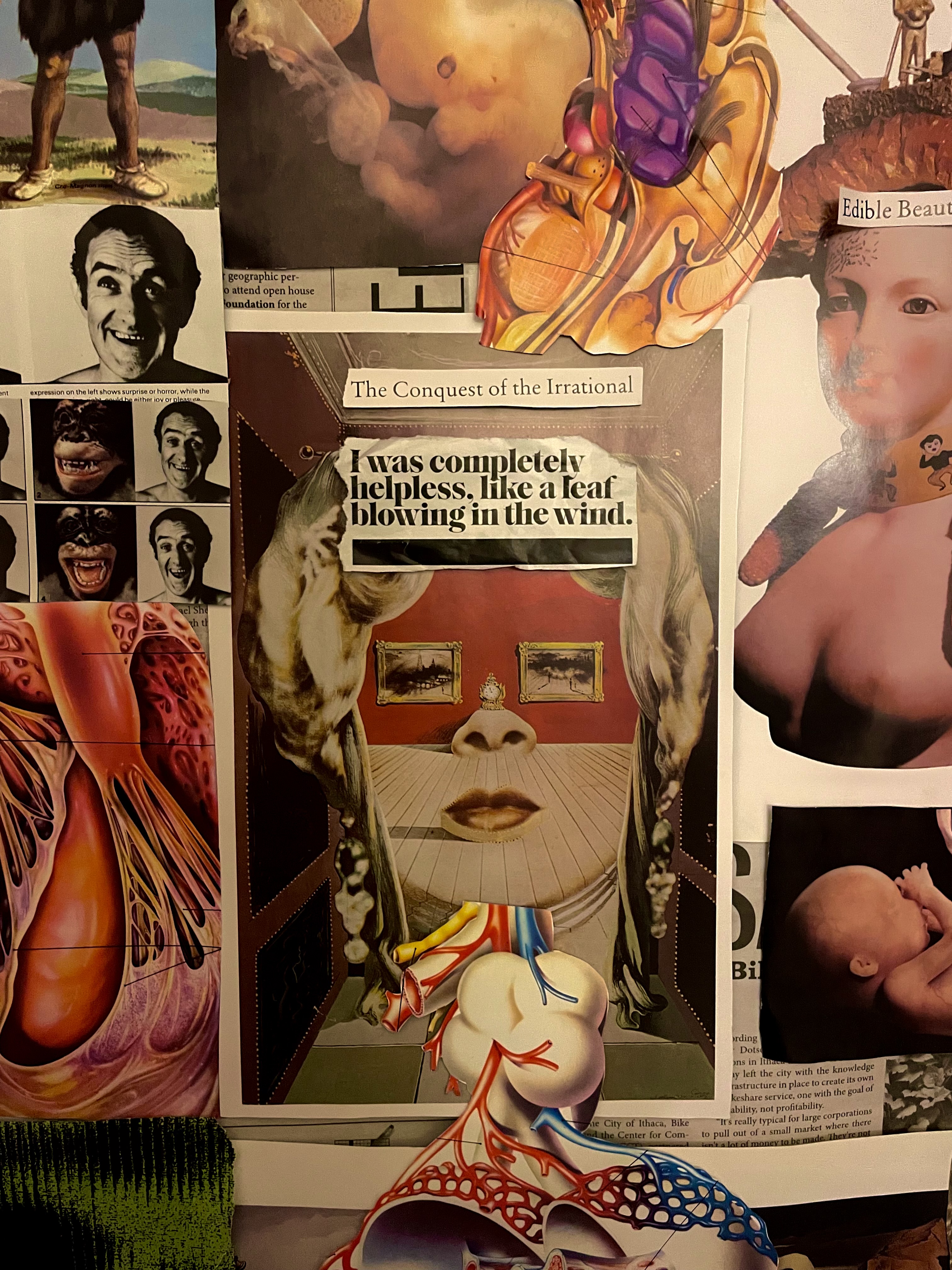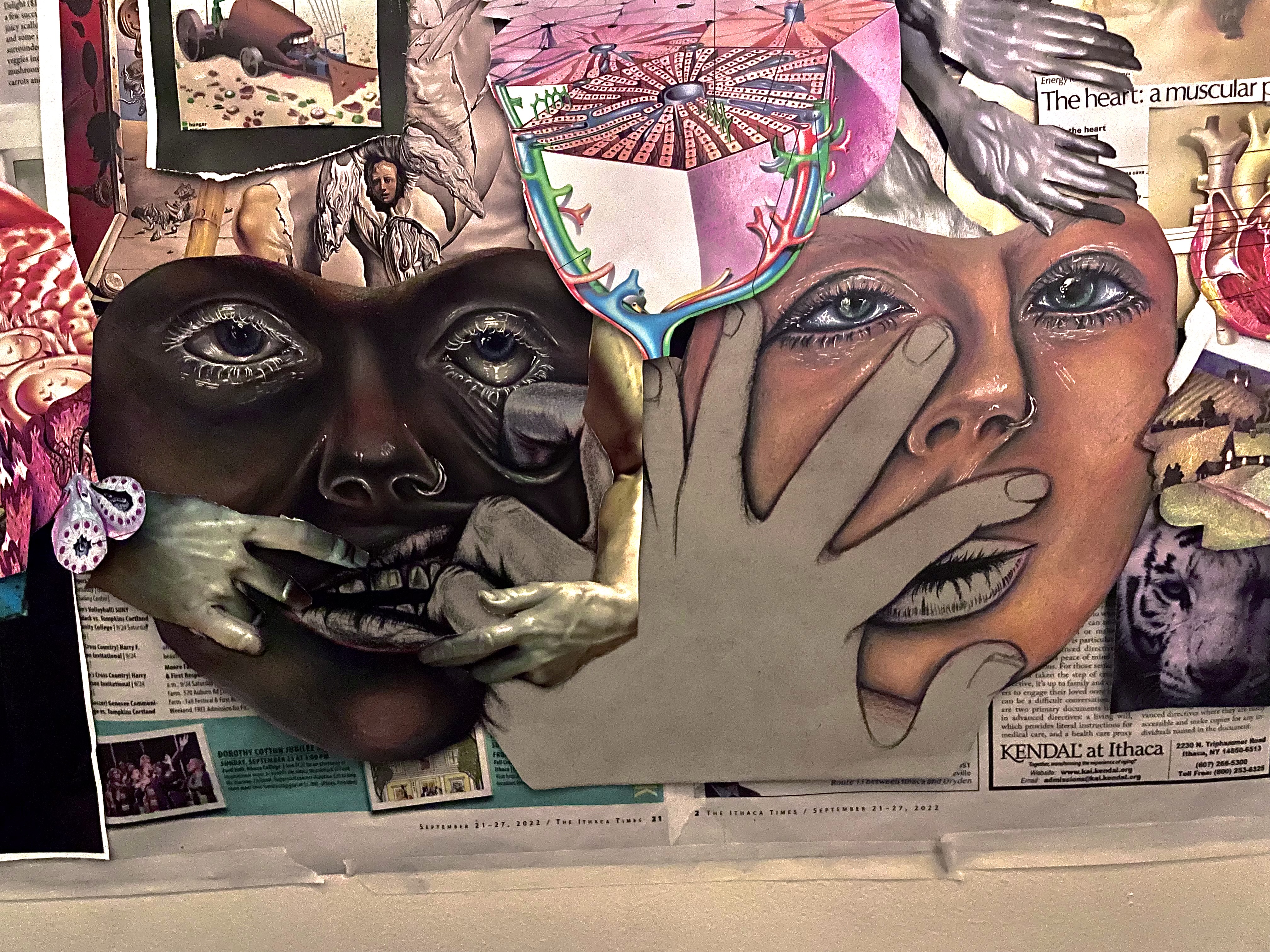An Introduction to the Monsterin all of uS
A psychological archaeology examining the capacity for both creation and destruction within human nature, questioning whether our evolution has led us toward greater humanity or more sophisticated forms of monstrosity.
Layers of Consciousness
Navigate through different levels of human experience and shadow integration

The Arc of Becoming
Human evolution from primitive to modern - but what have we truly evolved toward?
surface layerMarble Dreams
Classical sculptures representing idealized humanity and beauty
philosophical layerContemporary Fragments
Modern media, technology, and cultural artifacts
surface layerInner Topography
Faces, expressions, and psychological states layered together
deep layerInstitutional Monsters
Systems, structures, and societal mechanisms that create monstrosity
deep layerBecoming Other
Moments of transformation, change, and metamorphosis
philosophical layerCollection Studies
Explore individual pieces and process documentation from the Monster series

Archeological Detail
Close examination of layered consciousness

Complete Integration
The fully realized monster within

Textual Archaeology
Words as artifacts of consciousness

Preliminary Studies
Early explorations of form and meaning
Archaeological Methods
How psychological archaeology reveals the layers of human shadow and light
Psychological Archaeology
Excavating layers of human consciousness through material culture
Process:
Each magazine, image, and fragment represents a different stratum of contemporary consciousness - advertising, art, politics, desire.
Materials:
Insight:
Like an archaeologist, I dig through cultural sediment to find what we bury about ourselves.
Tracing Development
Following the path from biological to psychological to spiritual evolution
Process:
Arranging elements to show not just where we came from, but trajectories of where we might be going.
Materials:
Insight:
Evolution never stopped - but it moved from bodies to minds to souls. What are we evolving into?
Building Reflection
Creating a surface that shows viewers their own capacity for monstrosity
Process:
The collage becomes a mirror - each viewer sees different aspects of the "monster" based on their own fears and shadows.
Materials:
Insight:
The most effective monster is the one we recognize as ourselves.
Shadow Integration
Bringing together all aspects of human nature without denial or judgment
Process:
Rather than hiding our monstrous aspects, the piece integrates them as necessary parts of complete humanity.
Materials:
Insight:
Wholeness includes monstrosity. The goal is not to eliminate the monster, but to understand it.
Theoretical Foundations
Philosophical and psychological frameworks that inform this exploration
Jungian Shadow Work
Exploring the rejected aspects of self that we project onto others
Relevance to Monster Work:
The "monster" often represents our disowned parts - what we refuse to acknowledge about human nature.
Indigenous Concepts of Balance
Understanding that creation and destruction are necessary cycles
Relevance to Monster Work:
In many indigenous cosmologies, "monstrous" forces are not evil but necessary for balance and renewal.
Evolutionary Psychology
How ancient survival mechanisms manifest in modern psychological patterns
Relevance to Monster Work:
Our "monsters" may be evolutionary adaptations that no longer serve us in contemporary contexts.
Decolonial Theory
How colonization creates monsters by severing people from wholeness
Relevance to Monster Work:
The real monster might be the systems that fragment human beings from their complete selves.
On Befriending Monsters
The monster is not something to be slayed but something to be understood. In Indigenous cosmologies, what Western psychology calls "shadow" is often seen as necessary medicine - the difficult aspects of existence that bring balance and teach essential lessons.
This collage emerged from a period of confronting my own capacity for harm, creativity, destruction, and healing. Rather than rejecting these "monstrous" aspects, I began to see them as incomplete without integration. The evolutionary timeline suggests we've always been becoming - but becoming what?
Perhaps the real evolution is not biological but consciousness-based: learning to hold the full spectrum of human capacity without being consumed by it. The classical figures represent our aspirations for beauty and perfection, while the contemporary fragments show how we've complicated and corrupted those ideals.
Indigenous futurism asks: what if our future evolution involves reclaiming wholeness rather than perfection? What if the path forward requires befriending our monsters rather than banishing them? What if monstrosity, properly understood, is medicine?
— On shadow integration as spiritual practice, 2023